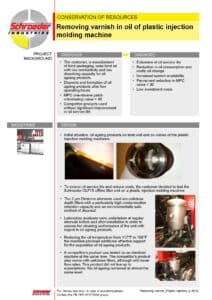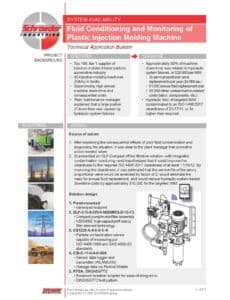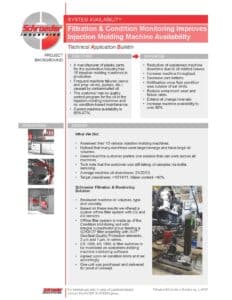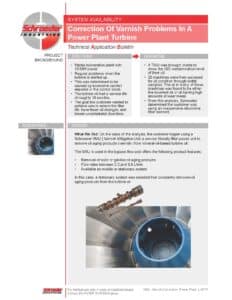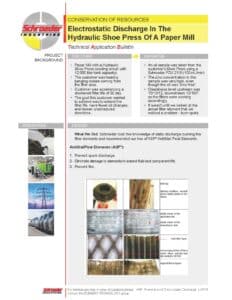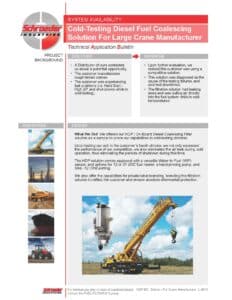Brendan Quigley | November 15th, 2016
Perhaps one of the hardest facets to quantify in the industrial world is the monetary impact of unexpected downtime (UDT).
UDT is often roped into the equally challenging return-on-investment (ROI) when trying to justify a path forward to address UDT. If the goal of these quantifications is to obtain 100% indisputable calculations on various costs and returns, then that could be a never-ending cycle of crunching numbers and tedious debates. If the goal is to better understand the impact that UDT has on a company’s productivity, quality, and bottom line, then maybe a different perspective is needed.
Treat the Cause of UDT, Not the Symptoms
Taking a crucial step back from stale planning discussions is not an acknowledgment of defeat, but a productive exercise to eventually move forward. To start, identify as many factors as possible that are impacted by unexpected downtime. Then develop a list of questions that could attempt to quantify those factors and have a team of people from different departments review them. Have the different departments involved rank these items as priorities and realize that different groups will have different priorities. One thing this process could do is show how seemingly unrelated items could actually be related through a root cause, which could be the unifying factor needed to move forward with project planning.
Let’s say the following departments identified their top UDT factors as the following:
- Maintenance: High Material Costs, Strain on Personnel
- Production: Missed Quotas, Overtime
- Engineering: System Improvements Frequently Postponed
- Quality: Inconsistent Results, More Errors in Uptime to Overcome Production Loss
- Sales: Unhappy Customers, Lost Accounts, and Referrals
- HR: Employee Turnover and Overall Morale
- Corporate: Lost Market Share, Increased Expenses
Prior to this exercise, aspects like employee turnover, lost market share, and unhappy customers might not have been tied to UDT. While other factors are also responsible for those aspects, some correlation could be attributed to recent UDT events to get a ballpark idea of the impact. If 2-3% of firings or employee turnover happen within a few days of a UDT incident, then reducing the frequency of UDT could improve those numbers. If account turnover can be tied to UDT events, then the size of those accounts could be a major decision point in project planning size and scope. By involving the corporate and administrative departments along with the production-related departments, the overall priorities can start to be realigned.
How do we start to make some of those abstract connections more concrete? Develop a question list that is relevant to your industry.
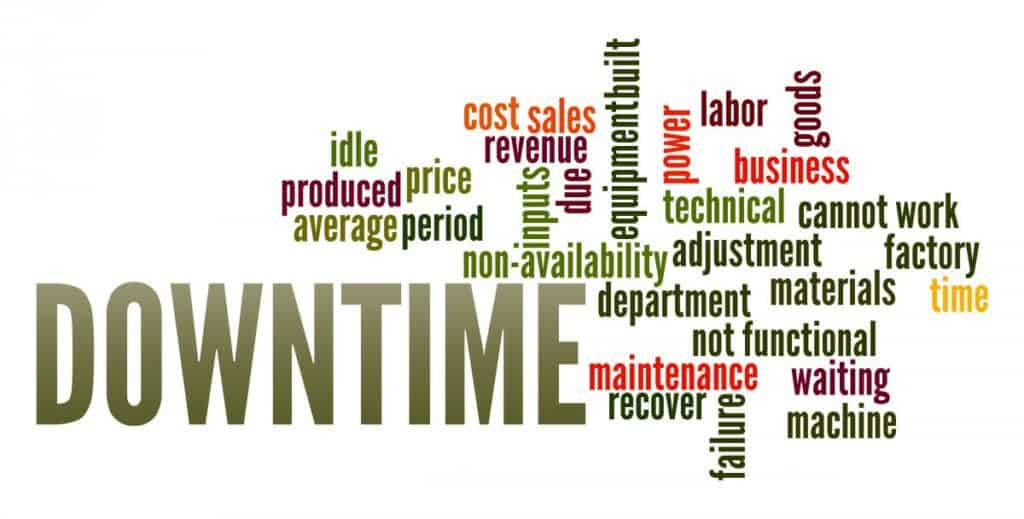
14 Questions to Jumpstart the UDT Discussion
- How frequently does unexpected downtime occur in our in our facilities and processes?
- What is the average duration of the downtime?
- How many internal resources are required to fix the downtime?
- Does UDT cause overtime or require work after-hours, on weekends, or holidays?
- How much does it cost for external resources to support a UDT event?
- Does the UDT typically happen during the beginning, middle, or end of a production run?
- If the materials are unsalvageable, what is the average cost of the lost materials?
- How much labor and expense is lost as a result?
- Does UDT cause strain on uptime production quota, employee health and safety, and affect overall product quality?
- Have orders been lost because the customer had to go elsewhere to meet a deadline?
- Have customers permanently moved to other manufacturers as a result of your UDT?
- Does UDT affect employee turnover or morale?
- How much of the current maintenance labor and material budget is based on unexpected downtime?
- Is the material pricing reflecting the cost of obsolete hardware that is both expensive and hard to acquire?
If a plant has determined that its UDT costs $2000 a minute and the average duration of UDT is 4 hours, then a single instance of UDT is at least $480,000. It is worth identifying the known factors in that $2000 estimate so that the possible unquantifiable impacts could be discussed. Time, resources, and subjectivity may impede accurate cost estimates of employee morale and turnover, lost business, unhappy customers, or market-share loss due to UDT, but acknowledging those aspects in this discussion could represent the overall UDT impact more accurately and stress the importance of taking immediate action.
Avoid “It Is What It Is”
In many cases, the need is evident but the solution remains elusive. When this happens, the pain of UDT is often masked as a part of doing business in this industry. While it can be hard to see alternative solutions if the same course has been followed for many years, sometimes that defense is a survival technique used to protect budgets and positions.
To counter this “It is what it is” (IIWII) defense strategy, it is important to point out that confronting those chronic issues could be just as beneficial to the same budgets and positions. Maintenance labor and parts will always be needed in a factory, but how the resources are spent could be drastically changed to be proactive instead of reactive. Proactively investing in systems can go a lot further in stabilizing the workforce, product, income, and market share.
If the plant’s material budget includes the replacement of obsolete programmable logic controllers (PLCs) or input-output (I/O) modules several times a year, the material cost alone could be in the tens of thousands of dollars. The money used on those parts are not ensuring long-term sustainability but short-term band-aids for the system. While new control systems are not cheap, a significant percentage of the money targeted for the obsolete hardware over the next 5-10 years could pay for the investment in new hardware and programming. Typically when moving to a new or updated control platform, the pricing is competitive, the parts are generally available on short notice, and more people are trained on supporting that platform. All three of those factors could justify a project by reducing some of the negative financial impacts of unexpected downtime.
Find Your Path Forward
The next step for a factory to address UDT could be to involve a trusted industry consultant because a task like this varies greatly from the routine maintenance and operation of the plant. Many facilities can get by day-to-day with out-dated drawings, incomplete loop sheets and interlock lists, and complex programming because the personnel are well-versed in extinguishing the fires in that system. Also, many of the intricacies in the system are stored in an operator or engineer’s memory. The consultation is needed to evaluate those systems for upgrade readiness and to extract the valuable personnel knowledge into new documentation for safe keeping.
Since integration firms routinely handle system upgrade projects, they can identify common pitfalls in planning or budgeting projects. A fresh set of eyes is crucial in identifying the good, the bad, and the ugly parts of any system so that a fuller picture of requirements is created and approved by management. Knowing the state of readiness in the hardware, software, and documentation at the plant can determine whether a solution can be quoted as a complete project or separated into phases, starting with a Functional Specification (FS).
Hopefully, these insights can provide a fresh perspective to facility planning discussions. For more information on project planning, upgrades, migrations, and functional specifications, please visit our library of blogs on these topics.

